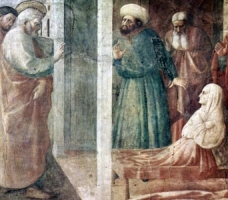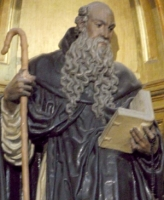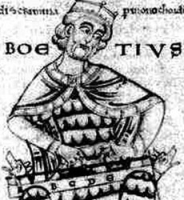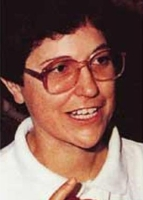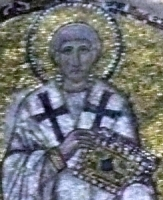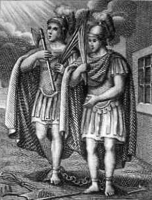St. Boniface I
புனிதர் முதலாம் போனிஃபாஸ்
42ம் திருத்தந்தை :
(42nd Pope)
பிறப்பு : ரோம்
இறப்பு : செப்டம்பர் 4, 422
ரோம்
நினைவுத் திருநாள் : அக்டோபர் 25
திருத்தந்தை புனிதர் முதலாம் போனிஃபாஸ், கத்தோலிக்க திருச்சபையின் 42ம் திருத்தந்தையாக 418ம் ஆண்டு, டிசம்பர் மாதம், 28ம் தேதி முதல், 422ம் ஆண்டு, செப்டம்பர் மாதம், 4ம் தேதி வரை பணியாற்றினார். இவர் புனித அகஸ்தீனுடைய சமகாலத்தவர். “புனிதர் அகுஸ்தீன்” (Saint Augustine of Hippo), இவருக்கு தன் படைப்புகளுள் பலவற்றை அர்ப்பணித்துள்ளார்.
(Liber Pontificalis) எனும் மேற்கத்திய திருச்சபையின் திருத்தந்தையர் அல்லது ஆயர்களின் நடப்புகள் மற்றும் சடங்குகள் பற்றின விபரங்கள் எழுதப்பட்டிருக்கும் புத்தகத்தில், திருத்தந்தை போனிஃபாஸ் பற்றின விபரங்கள் சிறிதளவே காணப்படுகின்றன. இவர் ஒரு ரோமன் என்றும், கிறிஸ்தவ தேவாலயத்தின் மூப்பரான (Presbyter) “ஜோகண்ட்டஸ்” (Jocundus) என்பவருடைய மகன் என்றும் அறியப்படுகிறது. இவர், திருத்தந்தை “முதலாம் டமாஸ்கஸ்” (Pope Damasus I) அவர்களால் குருத்துவம் பெற்றவர் என்றும், “கான்ஸ்டண்டினோபிலில்” (Constantinople) திருத்தந்தை “முதலாம் இன்னொசென்ட்டின்” (Innocent I) பிரதிநிதியாக செயல்பட்டவர் என்றும் அறியப்படுகிறது.
திருத்தந்தைத் தேர்தலில் குழப்பம் :
திருத்தந்தை “சோசிமஸின்” (Pope Zosimus) இறப்புக்குப் பின், இருவர் திருத்தந்தை பதவிக்கு முன்மொழியப்பட்டனர். ஒருவர் போனிஃபாஸ், மற்றவர் “யூலாலியஸ்” (Eulalius). இதனால் ஏற்பட்ட குழப்பத்தை தவிர்க்கக் கோரி ரோம ஆட்சியாளர் “சிம்மாக்குஸ்” (Aurelius Anicius Symmachus) என்பவர் இரவேன்னா நகரில் தங்கியிருந்த ரோமப்பேரரசர் “ஹொனோரியசை” (Emperor Honorius) வேண்டி கடிதம் எழுதினார். அவர், முதலில் தேர்ந்தெடுக்கப்பட்டவர் யூலாலியஸ் ஆதலால், அவருக்கே ஆதரவளித்தார்.
ரோமப் பேரரசின் பேரரசி “கல்லா பிலசிடியா” (Empress Galla Placidia) மற்றும் அவருடைய கணவர் “மூன்றாம் கான்ஸ்டன்ஷியஸ்” (Constantius III) கூட யூலாலியுசுக்கு ஆதரவு தெரிவித்தனர். இருந்தாலும், யார் திருத்தந்தை என்னும் குழப்பத்தைத் தீர்ப்பதற்கு வசதியாக போனிஃபாசும், யூலாலியுசும் ரோமுக்கு வெளியே அனுப்பப்பட்டனர். அச்சமயம் இயேசுவின் உயிர்த்தெழுதல் விழா அண்மையில் நிகழவிருந்ததைப் பயன்படுத்திக்கொண்ட யூலாலியுசு, பேரரசின் உத்தரவுகளையும், சட்டத்தையும் மீறி ரோமுக்குத் திரும்பினார். இது ரோம ஆட்சியாளர்களுக்குப் பிடிக்கவில்லை. இதைத் தொடர்ந்து பேரரசர் “ஹொனோரியஸ்” (Emperor Honorius) போனிஃபாஸ்’தான் முறைப்படி திருத்தந்தை ஆவார் என்று அறிவித்தார்.
போனிஃபாஸ் ஆட்சி :
திருத்தந்தை போனிஃபாஸ், தமக்கு முந்தைய சில திருத்தந்தையரின் திருச்சபையின் நிர்வாகம் சம்பந்தமான கொள்கைகள் சிலவற்றை மாற்றியமைத்தார். “பெலாஜியஸ்” (Pelagius) எனும் பிரிட்டிஷ் துறவி போதித்த “பெலாஜியனிசம்” (Pelagianism) எனும் இறையியல் கோட்பாடுகளைக் கண்டித்தார். இதனை எதிர்த்து போராடுவதற்காக, இவர் “புனிதர் அகுஸ்தினாருக்கு” (St. Augustine) ஆதரவளித்தார்.
பேரரசர் “இரண்டாம் தியோடோசியசை”, (Emperor Theodosius II) அவரது மேற்கத்திய அதிகார வரம்பான “இலரிக்கம்” (Illyricum) திரும்ப வற்புறுத்தினார். மேலும், திருப்பீடத்துக்கு உள்ள உரிமைகளை இவர் நிலைநாட்டினார்
Feastday:
4 September
formerly 25 October
Born
c.350 at Rome, Italy
Patron: of brewers; Fulda; Germany; World Youth Day
Died 4 September 422 at Rome, Italy of natural causes
buried in the cemetery of Maximus on the Via Salaria, Rome
Boniface I Ordained by Pope Damasus I, St. Boniface was a priest at Rome and served as papal legate to Constantinople under Innocent I. When Pope Zosimus died in December, 418, a majority elected Boniface pope, and a minority elected Eulalius pope. Pope and antipope were consecrated on the same day. The Council of Spoleto was convoked in 419 to settle the dispute. Symmachus the Prefect supported Eulalius, and the Emperor Honorius supported Boniface, who was enthroned after the council. Boniface condemned Pelagianism and encouraged St. Augustine to write against it. When Boniface died in 422, he was buried in a chapel which he had built in the cemetary of St. Felicity.
"Boniface" redirects here. For other uses, see Boniface (disambiguation).
For other uses, see Saint Boniface (disambiguation).
Boniface, OSB (Latin: Bonifatius; c. 675[2] – 5 June 754) was an English Benedictine monk and leading figure in the Anglo-Saxon mission to the Germanic parts of the Frankish Empire during the eighth century. He organised significant foundations of the church in Germany and was made archbishop of Mainz by Pope Gregory III. He was martyred in Frisia in 754, along with 52 others, and his remains were returned to Fulda, where they rest in a sarcophagus which has become a site of pilgrimage.
Boniface's life and death as well as his work became widely known, there being a wealth of material available — a number of vitae, especially the near-contemporary Vita Bonifatii auctore Willibaldi, legal documents, possibly some sermons, and above all his correspondence. He is venerated as a saint in the Christian church and became the patron saint of Germania, known as the "Apostle to the Germans".
Norman F. Cantor notes the three roles Boniface played that made him "one of the truly outstanding creators of the first Europe, as the apostle of Germania, the reformer of the Frankish church, and the chief fomentor of the alliance between the papacy and the Carolingian family."[3] Through his efforts to reorganize and regulate the church of the Franks, he helped shape the Latin Church in Europe, and many of the dioceses he proposed remain today. After his martyrdom, he was quickly hailed as a saint in Fulda and other areas in Germania and in England. He is still venerated strongly today by German Catholics. Boniface is celebrated as a missionary; he is regarded as a unifier of Europe, and he is regarded by German Roman Catholics as a national figure.[citation needed]
In 2019, Devon County Council with the support of the Anglican and Catholic churches in Exeter and Plymouth, officially recognised St Boniface as the Patron Saint of Devon
St. Hildemarca
Feastday: October 25
Death: 670
Benedictine abbess invited by St. Wandrille to head his monastery in Fecamp, France. She had been a nun at St. Eulalia in Bordeaux.
St. Marnock
Feastday: October 25
Irish bishop, a disciple of St. Columba. He resided on Jona, Scotland, and is also called Marnan, Marnanus, or Marnoc. He died at Annandale and is revered on the Scottish border. His name was given to Kilmarnock, Scotland.
Saint Crispin and Saint Crispian
புனிதர்கள் கிறிஸ்பின் மற்றும் கிறிஸ்பினியன்
மறைசாட்சியர்:
(Martyrs)
பிறப்பு: கி.பி. 3ம் நூற்றாண்டு
இறப்பு: கி.பி. 286
ரோம் (Rome)
ஏற்கும் சமயம்:
ரோமன் கத்தோலிக்க திருச்சபை
கிழக்கு மரபுவழி திருச்சபைகள்
இங்கிலாந்து திருச்சபை
முக்கிய திருத்தலங்கள்:
சோய்சன்ஸ் (Soissons)
நினைவுத் திருநாள்: அக்டோபர் 25
பாதுகாவல்:
காலணி தயாரிப்பாளர்கள்; தோல் பதனிடுபவர்கள்; கையுறை தயாரிப்பாளர்கள்; சரிகை தயாரிப்பாளர்கள்; சரிகைத் தொழிலாளர்கள்; தோல் தொழிலாளர்கள்; சேணம் தயாரிப்பாளர்கள்; நெசவாளர்கள்.
சான் கிறிஸ்பின் (San Crispin), சான் பப்லோ நகரம் (San Pablo City), பிலிப்பைன்ஸ் (Philippines)
புனிதர்கள் கிறிஸ்பின் மற்றும் கிறிஸ்பினியன் ஆகியோர், காலணி தயாரிப்பாளர்கள், தோல் பதனிடுபவர்கள், கையுறை தயாரிப்பாளர்கள், சரிகை தயாரிப்பாளர்கள், சரிகைத் தொழிலாளர்கள்; தோல் தொழிலாளர்கள், மற்றும், சேணம் தயாரிப்பாளர்கள், நெசவாளர்கள், ஆகியோரது கிறிஸ்தவ பாதுகாவல் புனிதர்கள் ஆவர்.
ரோமப் பேரரசர் டயக்லேஷியன் ஆட்சிக்காலத்தில், கி.பி. சுமார் 285 அல்லது 286ம் ஆண்டு, இவர்களிருவரும், மறைசாட்சியராய் சித்திரவதை செய்யப்பட்டு, கொடுமையான வகையில் கொல்லப்பட்டனர்.
வரலாறு:
கி.பி. 3ம் நூற்றாண்டில், ஒரு உன்னதமான ரோமானிய குடும்பத்தில் பிறந்த கிறிஸ்பின் மற்றும் கிறிஸ்பினியன் ஆகியோர், தங்கள் கிறிஸ்தவ விசுவாசத்திற்காக துன்புறுத்தலிலிருந்து தப்பி ஓடியபடியிருந்தனர். அவர்களது ஓட்டம், சோய்சன்ஸ் (Soissons) நகரில் முடிவடைந்தது. அங்கு அவர்கள் கிறிஸ்தவ மதத்தை "கௌல்ஸ்" (Gauls) இன மக்களுக்கு பிரசங்கித்தனர். அதே நேரத்தில் இரவு நேரங்களில் காலணிகள் தயாரித்தனர். அவர்கள் இரட்டை சகோதரர்கள் என்று கூறப்பட்டாலும், அது நேர்மறையாக நிரூபிக்கப்படவில்லை.
அவர்கள் தங்களுடைய தேவைகளுக்கும், ஏழைகளுக்கு உதவுவதற்குமான போதுமான வருமானத்தை, தங்கள் வர்த்தகம் மூலம் போதுமான அளவு சம்பாதித்தனர். அவர்களின் இந்த வெற்றி, "பெல்ஜிக் கோல்" ஆளுநரான "ரிக்டஸ் வரஸ்" என்பவரது கோபத்தை ஈர்த்தது. அவர்கள் சித்திரவதை செய்யப்பட்டு கழுத்தில் மைல் கற்கள் கட்டப்பட்டு, ஆற்றில் வீசப்பட்டனர். இருப்பினும், அதிலிருந்தும் தப்பிப்பிழைத்த அவர்கள், சக்கரவர்த்தியின் உத்தரவின்படி, தலை துண்டிக்கப்பட்டு, கி.பி. 285–286ல் கொல்லப்பட்டனர்.
கி.பி. 16ம் நூற்றாண்டின் புராணக்கதை ஓன்று, அவர்களை "ஃபேவர்ஷாம்" (Faversham) நகரத்துடன் இணைக்கிறது.
புனிதர்கள் கிறிஸ்பின் மற்றும் கிறிஸ்பினியன் ஆகியோரின் நினைவுத் திருநாள், அக்டோபர் 25 ஆகும். இரண்டாம் வத்திக்கான் (Second Vatican Council) சபையைத் தொடர்ந்து, ரோமன் கத்தோலிக்க திருச்சபையின் உலகளாவிய வழிபாட்டு நாட்காட்டியிலிருந்து (Catholic Church's Universal Liturgical Calendar) இந்த நினைவுத் திருநாள் அகற்றப்பட்டாலும், இவ்விரு புனிதர்களும் அந்த நாளில் இன்றும் ரோமன் திருச்சபையின் மறைசாட்சிய (Roman Church's Martyrology) பதிப்பில் நினைவுகூரப்படுகிறார்கள்.
கி.பி. ஆறாம் நூற்றாண்டில் இந்த புனிதர்களின் கல்லறைகளுக்கு மேல் சோய்சன்ஸ் நகரில், ஒரு அழகிய பேராலயம் அமைக்கப்பட்டது. மேலும், புகழ்பெற்ற பொற்கொல்லர் புனித எலிஜியஸ் (St. Eligius) புனித கிறிஸ்பினியனின் தலைக்கு ஒரு விலையுயர்ந்த திருத்தலத்தை உருவாக்கினார்.
Also known as
Crispinus and Crispianus
Profile
Brothers and members of the imperial Roman nobility. Together they evangelized Gaul in the middle 3rd century. They worked from Soissons, France where they preached in the streets by day, made shoes by night. Their charity, piety, and contempt of material things impressed the locals, and many converted in the years of their ministry. Martyred under emperor Maximian Herculeus, being tried by Rictus Varus, governor of Belgic Gaul and an enemy of Christianity. A great church was built at Soissons in the 6th century in their honor; Saint Eligius ornamented their shrine.
Because of his association with shoes, shoe-making, etc. a shoeshine kit is called a "Saint-Crispin"; an awl is "Saint Crispin's lance"; and if your shoes are too tight, you are "in Saint Crispin's prison."
Died
tortured and beheaded c.286 at Rome, Italy
Patronage
• cobblers, shoemakers
• glove makers
• lace makers, lace workers
• leather workers
• saddle makers, saddlers
• tanners
• weavers
Representation
• cobbler's last
• leather awl
• shoe
Blessed Thaddeus McCarthy
Also known as
• Tadhg MacCarthy
• Taddeo Machar
• White Martyr of Münster
Profile
Son of the Lord of Muskerry, Ireland; grandson of the Lord of Kerry, Ireland. Educated by the Franciscans at Timoleague,at the University of Paris, and in Rome, Italy. Priest. Bishop of Ross, Ireland in 1482; when he arrived in Ross he found that Bishop Hugh O'Driscoll was still alive and holding the see. Because of the political intrigues of the time, and the fact that people were not above falsley reporting the bishop's death or sending an imposter to take his place, years of disputes broke out over the appointment, and Thaddeus never did assume his position. At one point he was excommunicated by Pope Sixtus IV, had the excommunication confirmed by Pope Innocent VIII, and charged with fraud; he was cleared of all charges, civil and ecclesiastic, and the excommunition revoked.
Bishop of Cork and Cloyne, Ireland on 21 April 1490. When he arrived he found that locals had chosen Gerald FitzGerald as bishop, and for political reasons there were armed supporters in the cathedral to prevent Thaddeus from assuming control. Thaddeus appealed to the Pope, and had his support, but without armed supporters he travelled for a while as a pilgrim to holy sites. He died while on the road. The title White Martyr of Munster commemorates the mental and physical anguish he suffered while trying to do the Church's work.
Born
c.1455 in County Cork, Ireland
Died
• 25 October 1492 in a pilgrim's hostel at Ivrea, Italy of natural causes
• the hostel warden found him deceased but surrounded by light
• Bishop Nicholas Garigliatti had a dream of Thaddeus's death and ascension to heaven, and came to collect the body, which would have otherwise been given a pauper's burial as the man was an unknown pilgrim
• buried in the cathedral of Ivrea
• miracles reported at the tomb
• body found incorrupt when the tomb was opened in 1742, but later deteriorated
• some relics enshrined in the Cathedral of Saint Mary and Saint Anne in Cork, Ireland
• some relics enshrined in the Cathedral of Saint Colman, Cobh, Ireland
• some relics enshrined in the Church of Saint Mary, Youghal, Ireland
Beatified
1896 by Pope Leo XIII (cultus confirmation)
Blessed Maurus of Pécs
Also known as
• Maurus of Nitra
• Maurus of Pannonhalma
• Maurice, Mauricio, Mauro, Mór
Additional Memorial
4 December (Benedictines)
Profile
Benedictine monk in his youth at the San Martin monastery in Pannonhalma, Hungary. Abbot his monastery from 1029 till 1036, having been chosen by Saint Stephen of Hungary. Friend of Saint Emeric of Hungary. Bishop of Pécs, Hungary in 1036, the second bishop of the diocese, and possibly the first bishop born in the kingdom of Hungary; he served for over 30 years. Finished construction of the cathedral in Pécs. Survived the pagan uprising during the reign of King Peter I, and helped celebrate the coronation of the Christian king Andrew I in 1046. Courtier to King Andrew. Helped found the Tihany Abbey in 1055. Peacemaker between warring political factions in Hungary. Wrote Legend of Saints Benedict and Andrew Zorard c.1064, making him the first Hungarian ecclesiastical writer and hagiographer.
Born
c.1000, probably in the territory of modern Hungary
Died
c.1075 in Pécs, Hungary of natural causes
Beatified
22 July 1848 by Pope Pius IX (cultus confirmation)
Patronage
Diocese of Pécs, Hungary
Saint Tabitha
Also known as
Dorcas
Profile
Married lay woman in Joppa (in modern Israel). Seamstress. Widow. Mentioned in the Acts of the Apostles. When she fell ill and died, she was raised from the dead by Saint Peter the Apostle.
Died
1st century
Saint Chrysanthus and Saint Daria
Also known as
Crisaunt, Crescentius, Crisanto
Profile
Married couple who were zealous and public in their Christianity. Martyred in the persecutions of Numerian and Carinus.
Not surprisingly, many legends developed around a couple of married martyrs, and others were re-written to use them as their lead characters. Modern scholarship has dismissed all these, leaving only two of the thousands of faithful who lost their lives in the early days of the Church.
Born
Egyptian
Died
• stoned to death c.283 in a sandpit off the Salarian Way, Rome, Italy
• relics at Bad Münstereifel, Germany
Patronage
• Eissel, Germany
• Salzburg, Austria
Representation
• ox skin
• sand pit
Saint Gaudentius of Brescia
Also known as
Gaudenty
Profile
Studied under Saint Philastrius, Bishop of Brescia, Italy. He preached throughout Italy and in the East, respected wherever he went for his oratory and leading the Christian life. When Philastrius died near the end of the 4th century, the people of Brescia chose Gaudentius as their bishop. He was consecrated by Saint Ambrose of Milan in 387. Guadentius wrote many pastoral letters, and ten of his sermons have come down to us. They show a desire to educate, and to present good examples for living.
He left his diocese in 405 to join a delegation sent by Pope Innocent I to defend Saint John Chrysostom from charges brought by a heretic. The group was forced by John's enemies to return to Italy. Their ship sank near Lampsacus, Greece, but the group finally safely reached home. Though the delegation did not achieve its mission, Saint John sent a letter of thanks to Saint Gaudentius.
Born
at Brescia, Italy
Died
410 of natural causes
Saint Bernard of Calvo
Also known as
• Bernard of Calbo
• Bernard of Vich
• Bernard of Vic
• Bernat
Profile
Educated in Manso Calvo, Spain and Lleida, Spain. Benedictine Cistercian monk. Worked with Saint Raymond of Penyafort. Canon of the Tarragona cathedral and vicar-general in Tarragona, Spain. Appointed by Pope Gregory IX to combat the Waldenses in 1232 on the border of France. Bishop of Vich, Spain in 1233. Abbot of Santa Creus Monastery near Tarragona, Spain. Part of the of Council of Tarragona in 1239 and 1243.
Born
1180 at Manso Calvo, Catalan, Spain
Died
• 26 October 1243 in north Tarragona, Spain of natural causes
• interred in Vich, Spain
• some relics in the priory of San Pedro de Reus
Saint Miniato of Florence
Also known as
Minias
Profile
Soldier, though he is often depicted as a military prince. Evangelized among his fellow troops when stationed in Florence, Italy. Martyred in the persecutions of Decius. An abbey outside the Florence city walls is named for him.
Died
c.250 in Florence, Italy
Representation
• young prince holding a crown
• young man crowned while holding a rod and palm
• young man crowned while holding a lily, rod and palm
• young man carrying his severed head
Blessed Henry of Segusio
Also known as
Hostiensis
Profile
Studied civil and canon law at Bologna, Italy. Taught in Bologna. Taught canon law in Paris, France. Diplomat from the court of King Henry III to Pope Innocent IV. Provost of of the diocese of Antibes, France. Chaplain to the pope. Bishop of Sisteron, France in 1244. Archbishop of Embrun, France in 1250. Cardinal-Bishop of Ostia and Velletri on 4 December 1261. Attended the conclave that elected Pope Gregory X, but his health prevented him from voting. Wrote a number of treaties on canon law.
Born
Susa, Italy
Died
25 October 1271 in Lyons, France of natural causes
Saint Gavinus of Sassari
Also known as
Gavino
Profile
Imperial Roman soldier executed for his faith in the persecutions of Diocletian. Martyr.
Died
25 October 303 Porto Torres, Italy
Patronage
in Italy: Camposano • Elini • Esporlatu • Gavoi • Illorai • Monti • Muros • Oniferi • Porto Torres • Sassari, archdiocese of • Sassari, city of
Saint Fronto of Périgueux
Also known as
Front, Frontone, Frontón
Profile
Third-century missionary bishop of the Périgueux region of France.
Born
Lycaonia, Asia Minor
Died
• Périgueux, France of natural causes
• relics enshrined in Saint-Front cathedral in Périgueux
• relics thrown into the Dordogne river by Huguenots in 1575
Saint Hilary of Mende
Also known as
Chély, Hilaire, Ilaro, Ilario
Profile
Adult convert. Hermit, living by the River Tarn. Monk at Lérins Abbey. Bishop of Mende, France. Miracle stories attached to him include being carried on the wind to a place of privacy for his prayers, and the ability to draw water from a dry well for years.
Born
at Mende, southern France
Died
• 535 of natural causes
• relics destroyed in 1793 in the looting of the French Revolution
Saint Fructos of Segovia
Also known as
Fruitos, Frutos
Profile
Brother of Saint Engratia of Segovia and Saint Valentine of Segovia. When his brother and sister were martyred by invading Moors, Fructos fled and lived out his life as a hermit.
Born
at Sepulveda, Castile (in modern Spain)
Died
• c.715
• relics at Segovia, Spain
Patronage
Segovia, Spain
Saint Goeznoveus of Léon
Also known as
Gouéno, Gouenou, Gouesnou, Goueznou, Guennou
Profile
Brother of Saint Maughan. Emigrated to Brittany (part of modern France). Bishop of Léon, France.
Born
at Cornwall, England
Died
• 675 of natural causes
• most relics destroyed in the French Revolution
Blessed Edmund Daniel
Also known as
Edmund MacDaniell
Additional Memorial
20 June as one of the Irish Martyrs
Profile
Jesuit seminarian. One of the Irish Martyrs. First Jesuit martyr in Europe.
Born
Irish
Died
hanged on 25 October 1572 in Cork, Ireland
Beatified
27 September 1992 by Pope John Paul II in Rome, Italy
Saint Guesnoveus of Quimper
Also known as
Gouernou, Goeznoveus, Governou, Guinou
Profile
Bishop of Quimper, Brittany. Founder of a monastery near Brest, France.
Died
675 at Brest, France
Saint Januarius of Sassari
Profile
Deacon in Sardinia. Martyred in the persecutions of Diocletian.
Died
beheaded in 303 in Porto Torres, Sardinia, Italy
Saint Protus of Sassari
Profile
Priest in Sardinia. Martyred in the persecutions of Diocletian.
Died
beheaded in 303 in Porto Torres, Sardinia, Italy
Saint Dulcardus
Also known as
Doulchard
Profile
Monk at Saint-Mesmin Abbey in Orleans, France. Hermit near Bourges, France where the village of Saint-Doulchard was named for him.
Died
584
Saint Lucius of Rome
Profile
One of a group of 50 soldiers martyred together in the persecutions of Claudius II.
Died
269 in Rome, Italy
Saint Peter of Rome
Profile
One of a group of 50 soldiers martyred together in the persecutions of Claudius II.
Died
269 in Rome, Italy
Saint Theodosius of Rome
Profile
One of a group of 50 soldiers martyred together in the persecutions of Claudius II.
Died
269 in Rome, Italy
Saint Lupus of Bayeux
Profile
Fifth-century bishop of Bayeux, France.
Saint Martirio of Constantinople
Profile
Sub-deacon. Martyred by Arians in the persecutions of emperor Constantius.
Saint Marciano of Constantinople
Profile
Cantor. Martyred by Arians in the persecutions of emperor Constantius.
Saint Mark of Rome
Profile
One of a group of 50 soldiers martyred together in the persecutions of Claudius II.
Died
269 in Rome, Italy
Saint George of Périgueux
Profile
Third-century missionary priest of the Périgueux region of France.
Saint Cyrinus of Rome
Profile
Martyred in the persecutions of Diocletian.
Died
late 3rd century in Rome, Italy
Saint Hilary of Javols
Profile
Sixth-century bishop of Javols, France.
Martyrs of Cruz Cubierta
Profile
A mother, Blessed María Teresa Ferragud Roig de Masiá, and her four daughters, Blessed María Joaquina Masiá Ferragud, Blessed María Vicenta Masiá Ferragud, Blessed María Felicidad Masiá Ferragud and Blessed Josefa Ramona Masiá Ferragud, all nuns, who were Martyred in the Spanish Civil War.
Died
25 October 1936 in Cruz Cubierta, Alzira, Valencia, Spain
Beatified
11 March 2001 by Pope John Paul II
Forty Martyrs of England and Wales
Profile
Following the dispute between the Pope and King Henry VIII in the 16th century, faith questions in the British Isles became entangled with political questions, with both often being settled by torture and murder of loyal Catholics. In 1970, the Vatican selected 40 martyrs, men and women, lay and religious, to represent the full group of perhaps 300 known to have died for their faith and allegiance to the Church between 1535 and 1679. They each have their own day of memorial, but are remembered as a group on 25 October.
• Alban Roe • Alexander Briant • Ambrose Edward Barlow • Anne Line • Augustine Webster • Cuthbert Mayne • David Lewis • Edmund Arrowsmith • Edmund Campion • Edmund Gennings • Eustace White • Henry Morse • Henry Walpole • John Almond • John Boste • John Houghton • John Jones • John Kemble • John Lloyd • John Pain • John Plesington • John Rigby • John Roberts • John Southworth • John Stone • John Wall • Luke Kirby • Margaret Clitherow • Margaret Ward • Nicholas Owen • Philip Evans • Philip Howard • Polydore Plasden • Ralph Sherwin • Richard Gwyn • Richard Reynolds • Robert Lawrence • Robert Southwell • Secular Clergy • Swithun Wells • Thomas Garnet •
Canonized
25 October 1970 by Pope Paul VI
புனிதர் ஜான் ஹக்டன்
வேல்ஸ் மற்றும் இங்கிலாந்தின் 40 மறைசாட்சிகள் :
(Forty Martyrs of England and Wales)
பிறப்பு : கி.பி. 1486
இங்கிலாந்து
(England)
இறப்பு : மே 4, 1535
டிபர்ன், இங்கிலாந்து
(Tyburn, England)
ஏற்கும் சமயம் :
ரோமன் கத்தோலிக்க திருச்சபை
(Roman Catholic Church)
அருளாளர் பட்டம் : டிசம்பர் 9, 1886
திருத்தந்தை பதின்மூன்றாம் லியோ
(Pope Leo XIII)
புனிதர் பட்டம் : அக்டோபர் 25, 1970
திருத்தந்தை ஆறாம் பவுல்
(Pope Paul VI)
நினைவுத் திருநாள் : அக்டோபர் 25
புனிதர் ஜான் ஹக்டன், ஒரு கத்தோலிக்க குருவும், “கர்த்தூசியன் துறவி” (Carthusian hermit) ஆவார். அக்காலத்தில், இங்கிலாந்தின் மன்னன் “எட்டாம் ஹென்றியின்” (King Henry VIII) “மேலாதிக்க சட்டத்தின்” (Act of Supremacy) காரணமாக மரித்த முதல் ஆங்கில கத்தோலிக்க மறைசாட்சியாவார். இவருடன் மரித்த நாற்பது மறைசாட்சியரில் இவர் முதலாவது மறைசாட்சியாக கருதப்படுகிறார்.
கி.பி. சுமார் 1486ம் ஆண்டில் பிறந்த இவர், இவரைப் பின்பற்றிய கர்தூசியன் (Carthusians) சபை சகா ஒருவர் எழுதிய ஆவணங்களின்படி, “கேம்ப்ரிட்ஜ்” (Cambridge) பல்கலையில் கல்வி பயின்றார். தற்போதுள்ள ஆவணங்களில் இவரது குருத்துவ அருட்பொழிவு தேதி பற்றிய ஆவணங்களும் கிடைக்கவில்லை.
கி.பி. 1515ம் ஆண்டு, லண்டனிலுள்ள “சார்ட்டர்ஹௌஸ்” (London Charter house) அமைப்பில் சேர்ந்த இவர், கி.பி. 1523ம் ஆண்டு, 'கிறிஸ்தவ ஆலயங்களில் உள்ள புனிதப் பொருள்களைக் காப்பவராகவும், (Sacristan), கி.பி. 1526ம் ஆண்டு, 'பழங்கால ரோம அதிகாரி'யாகவும் உயர்ந்தார்.
கி.பி. 1534ம் ஆண்டு, புதிய வாரிசுரிமை சட்டங்களின்படி, (Act of Succession) கடைப்பிடிக்க வேண்டிய சத்தியப் பிரமாணங்களிலிருந்து தமக்கும் தமது சமூகத்தினருக்கும் விளக்கு அளிக்க வேண்டினார். இதன் பிரதிபலிப்பாக, இவரையும் இவரது செயலுரிமையாளர் ஒருவரையும் கைது செய்து “லண்டன் கோபுர” (Tower of London) கோட்டைக்கு இட்டுச் சென்றனர். அங்கே அவர்கள், அந்த புதிய சத்தியப் பிரமாணங்கள் கத்தோலிக்க சட்டங்களுக்கு ஒத்துப்போவதாக ஒப்புக்கொண்டனர். பின்னர், சார்ட்டர் ஹௌஸ் அழைத்து வரப்பட்ட இவர்களிருவரும், பெரும் ஆயுதப்படையினரின் முன்னிலையில், தமது மொத்த சமூகத்தினருடன் இணைந்து சத்திய பிரமாணம் எடுத்துக்கொண்டனர்.
கி.பி. 1535ம் ஆண்டு, மீண்டும் அழைக்கப்பட்ட இவர்களது சமூகத்தினர், இங்கிலாந்தின் மன்னன் எட்டாம் ஹென்றியை (King Henry VIII) ஆங்கில திருச்சபையின் தலைவராக ஏற்றுக்கொண்ட சட்ட திட்டங்களின் சத்தியப் பிரமாணங்களை ஏற்றுக்கொள்ளும்படி வற்புறுத்தப்பட்டனர். ஹக்டன் இம்முறை, கர்தூசியன் சபையின் பிற இரண்டு இல்லங்களின் முதல்வர்களான, “ராபர்ட் லாரன்ஸ்” (Robert Lawrence) மற்றும் “அகஸ்டின் வெப்ஸ்டர்” (Augustine Webster) ஆகிய இருவரையும் தம்முடன் அழைத்துச் சென்றார். ஆங்கிலேய சத்திய பிரமாணத்துக்கு விளக்கு அளிக்க வேண்டி கெஞ்சிய இவர்களது சமூகத்தினர் அனைவரும் இம்முறை “தாமஸ் கிராம்வெல்” (Thomas Cromwell) என்பவரால் மொத்தமாக கைது செய்யப்பட்டனர்.
கி.பி. 1535ம் ஆண்டு, ஏப்ரல் மாதம், ஒரு விசாரணை மன்றத்தின் முன்னர் நிறுத்தப்பட்டனர். “சியோன் மடத்தைச்” (Syon Abbey) சேர்ந்த “ரிச்சர்ட் ரேனால்ட்ஸ்” (Richard Reynolds) எனும் துறவி உள்ளிட்ட இவர்கள் அனைவருக்கும் மரண தண்டனை பிறப்பிக்கப்பட்டது.
புனிதர் ஜான் ஹக்டன் மற்றும் இரண்டு கர்த்தூசிய (Carthusians) துறவிகளான அருட்தந்தை “ரெனால்ட்” (Fr. Reynolds) மற்றும் அருட்தந்தை “ஜான் ஹைல்”', (Fr. John Haile of Isleworth) ஆகியோர் கி.பி. 1535ம் ஆண்டு, மே மாதம், 4ம் தேதியன்று, தூக்கிலிடப்பட்டு கொல்லப்பட்டனர்.
Feastday: October 25
Birth: 1486
Death: 1535
Protomartyr of the English Reformation. A native of Essex, he served as a parish priest after graduating from Cambridge. He then became a Carthusian and the prior of the Carthusian Charterhouse of London. As an opponent of King Henry Viii's Acts of Succession and Supremacy, he was arrested with other Carthusians but was released temporarily. He then refused to swear to the Oath of Supremacy, the first man to make this refusal. Dragged through the streets, he was executed at Tyburn with four companions by being hanged, drawn, and quartered. Parts of his remains were put on display in assorted spots throughout London. Pope Paul VI canonized him in 1970 as one of the Forty Martyrs of England and Wales.
This article is about the English Catholic martyr. For other men with the same name, see John Houghton (disambiguation).
John Houghton (c. 1486 – 4 May 1535) was a Carthusian hermit and Catholic priest and the first English Catholic martyr to die as a result of the Act of Supremacy by King Henry VIII of England. He was also the first member of his order to die as a martyr. He is among the Forty Martyrs of England and Wales.[3]
Life
Born around 1487, he was (according to one of his fellow Carthusians) educated at Cambridge, but cannot be identified among surviving records.[4] Similarly, no certain records can be found of his ordination.
He joined the London Charterhouse in 1516, progressed to be sacristan in 1523, and procurator in 1528.[1] In 1531, he became Prior of the Beauvale Priory in Nottinghamshire. However, in November of that year, he was elected Prior of the London house, to which he returned.[5] In addition, the following spring he was named Provincial Visitor, at the head of the English Carthusians.[1]
In April 1534, two royal agents visited the Charterhouse. Houghton advised them that "it pertained not to his vocation and calling nor to that of his subjects to meddle in or discuss the king's business, neither could they or ought they to do so, and that it did not concern him who the king wished to divorce or marry, so long as he was not asked for any opinion."[2] He asked that he and his community be exempted from the oath required under the new Act of Succession, which resulted in both him and his procurator, Humphrey Middlemore, being arrested and taken to the Tower of London. However, by the end of May, they had been persuaded that the oath was consistent with their Catholicism, with the clause "as far as the law of Christ allows" and they returned to the Charterhouse, where (in the presence of a large armed force) the whole community made the required professions.[2]
However, in 1535, the community was called upon to make the new oath as prescribed by the 1534 Act of Supremacy, which recognised Henry as the Supreme Head of the Church of England. Again, Houghton, this time accompanied by the heads of the other two English Carthusian houses (Robert Lawrence, Prior of Beauvale, and Augustine Webster, Prior of Axholme), pleaded for an exemption, but this time they were summarily arrested. They were called before a special commission in April 1535, and sentenced to death, along with Richard Reynolds, a monk from Syon Abbey.[5]
Houghton, along with the other two Carthusians, Reynolds and John Haile of Isleworth, was hanged, drawn and quartered at Tyburn on 4 May 1535.[6]
The three priors were taken to Tyburn in their religious habits and were not previously laicised from the priesthood and religious state as was the custom of the day. From his prison cell in the Tower, Thomas More saw the three Carthusian priors being dragged to Tyburn on hurdles and exclaimed to his daughter: "Look, Meg! These blessed Fathers be now as cheerfully going to their deaths as bridegrooms to their marriage!" John Houghton was the first to be executed. After he was hanged, he was taken down alive, and the process of quartering him began.
Catholic tradition relates that when Houghton was about to be quartered, as the executioner tore open his chest to remove his heart, he prayed, "O Jesus, what wouldst thou do with my heart?" A painting of the Carthusian Protomartyr by the noted painter of religious figures, Francisco Zurbarán, depicts him with his heart in his hand and a noose around his neck. In the Chapter house of St. Hugh's Charterhouse, Parkminster, in England, there is a painting depicting the martyrdom of the three priors.
After his death, his body was chopped to pieces and hung in different parts of London. He was beatified on 9 December 1886 and canonized on 25 October 1970.
Martyrs of Rome
Profile
A group of 46 soldiers and 21 civilians martyred together in the persecutions of Claudius II.
Died
269 in Rome, Italy
Martyred in the Spanish Civil War
Thousands of people were murdered in the anti-Catholic persecutions of the Spanish Civil War from 1934 to 1939. I have pages on each of them, but in most cases I have only found very minimal information. They are available on the CatholicSaints.Info site through these links:
• Blessed Alfons Arimany Ferrer
• Blessed Recaredo Centelles Abad
Also celebrated but no entry yet
• Beneria
• Bernard of Saint Joseph
• Canna
• Catherine of Bosnia
• Cleto
• Daria of Connaught
• Derbilia of Connaught
• Dominic of Seville
• Ludovico of Arnstein
• Tegulo





